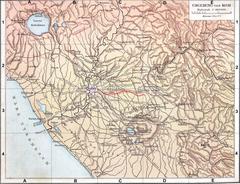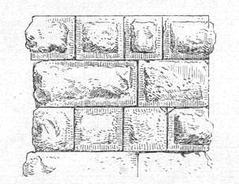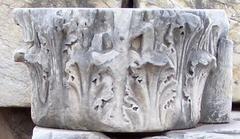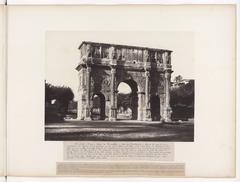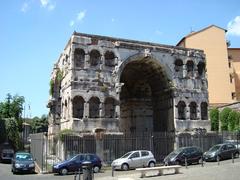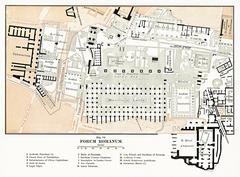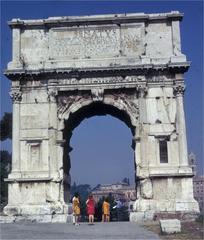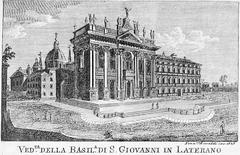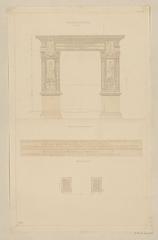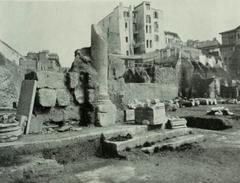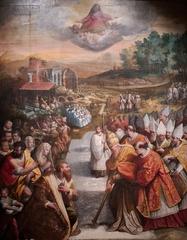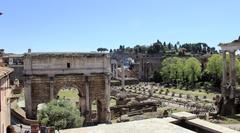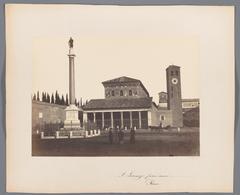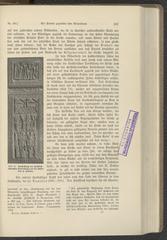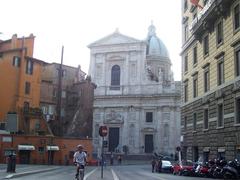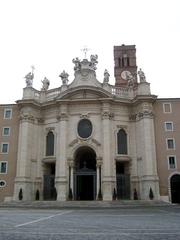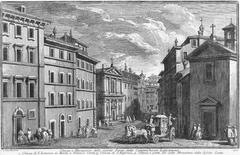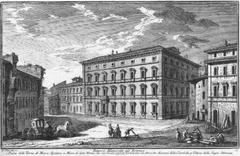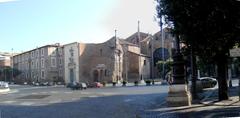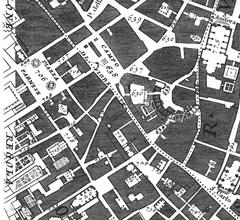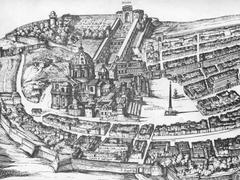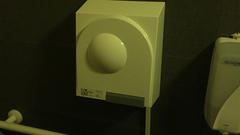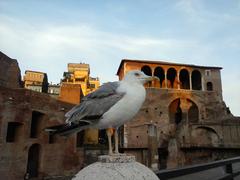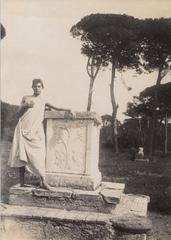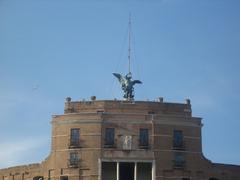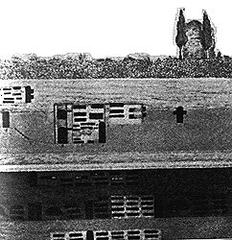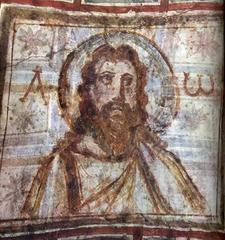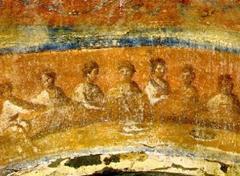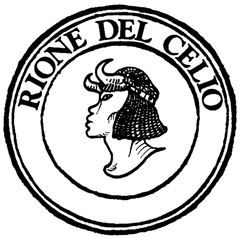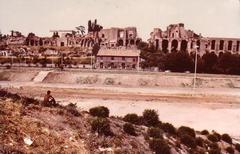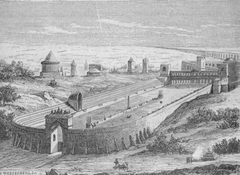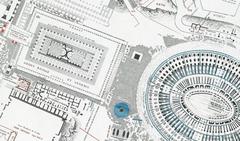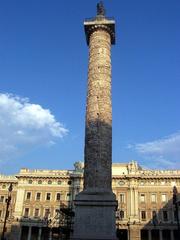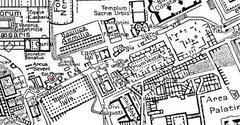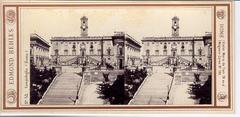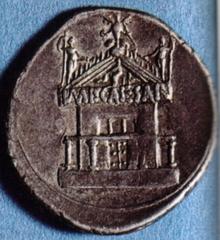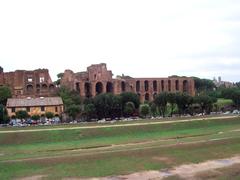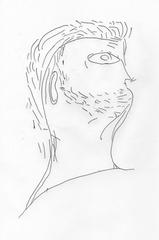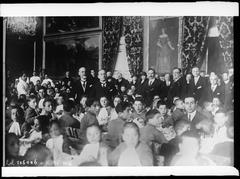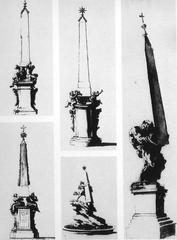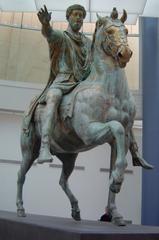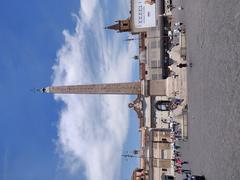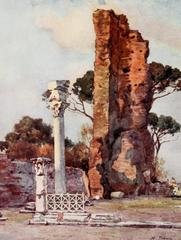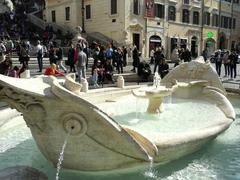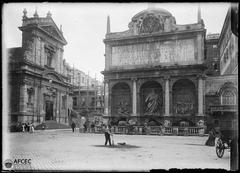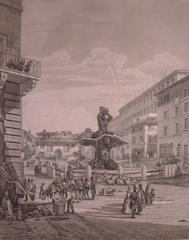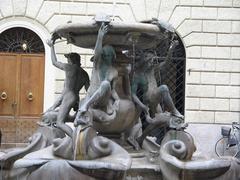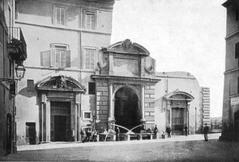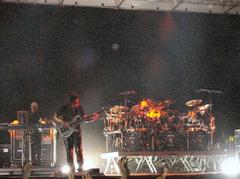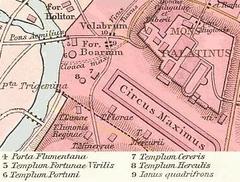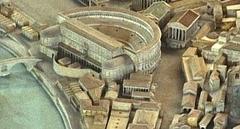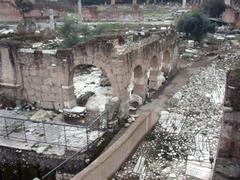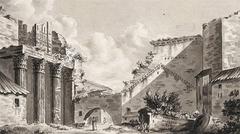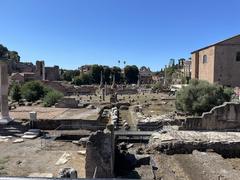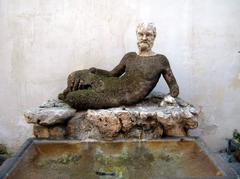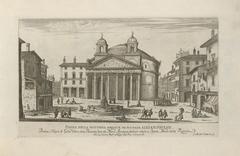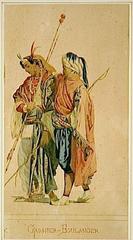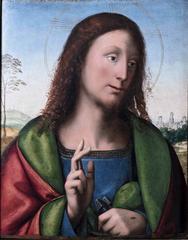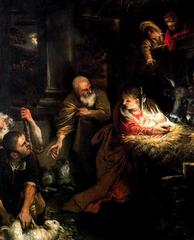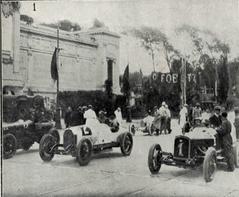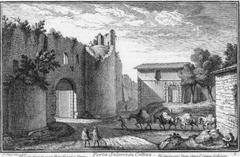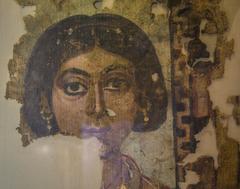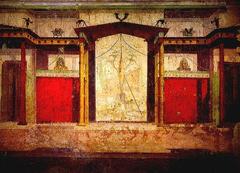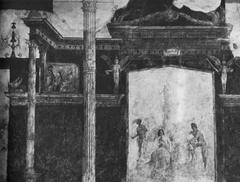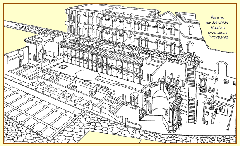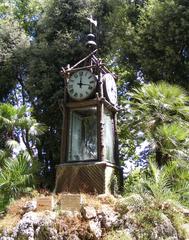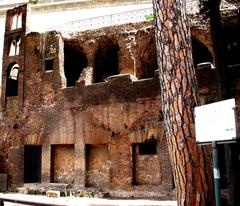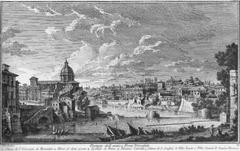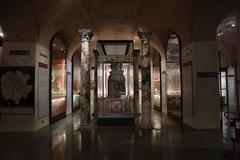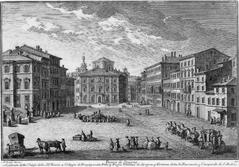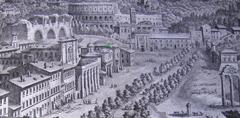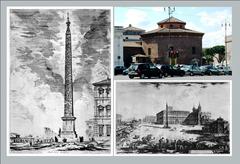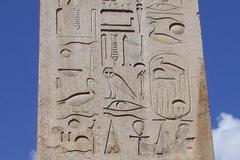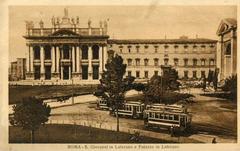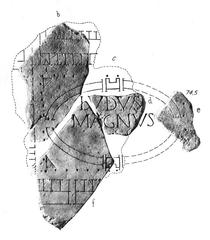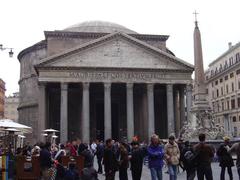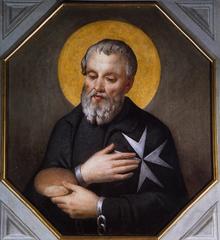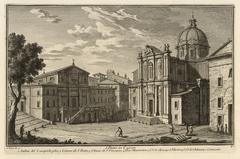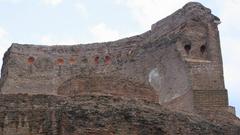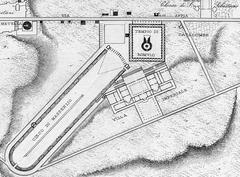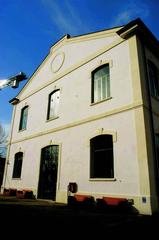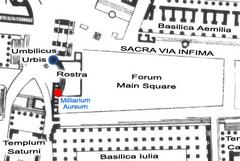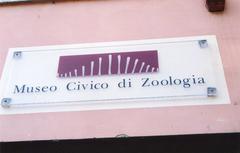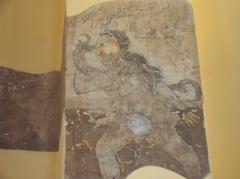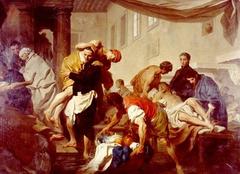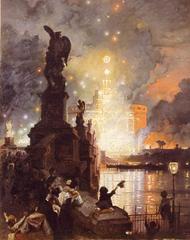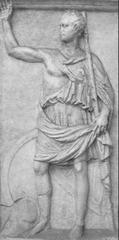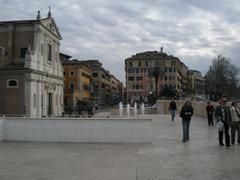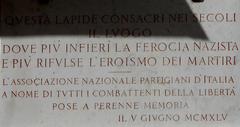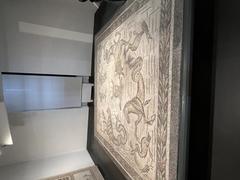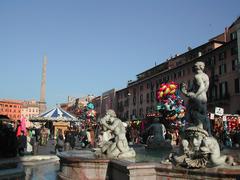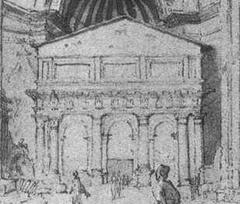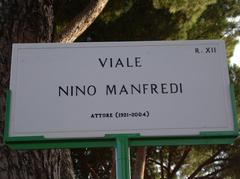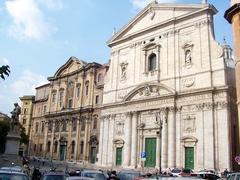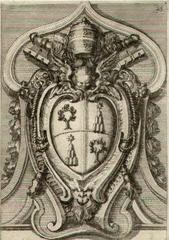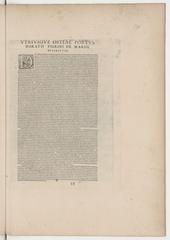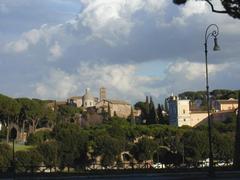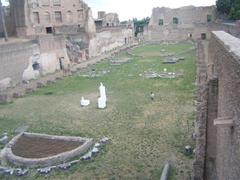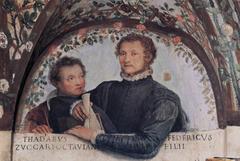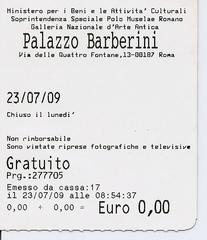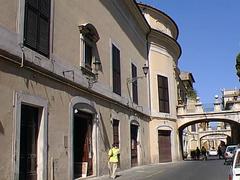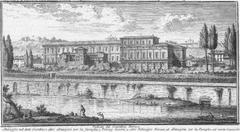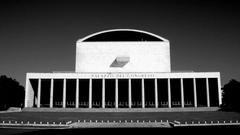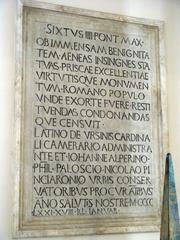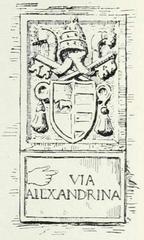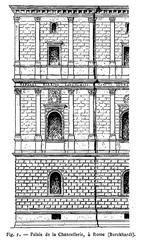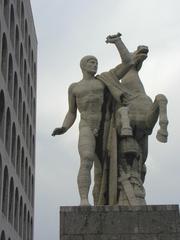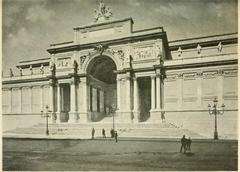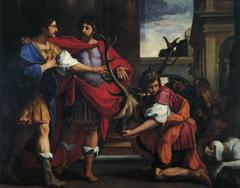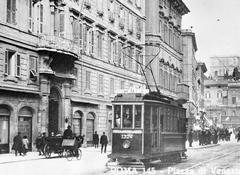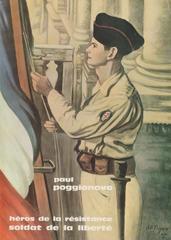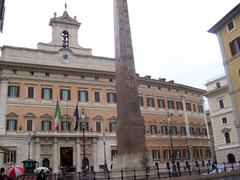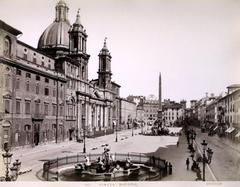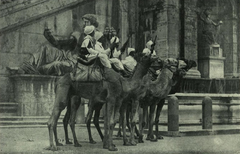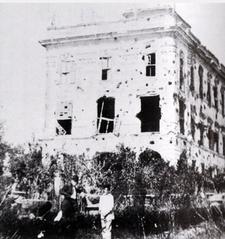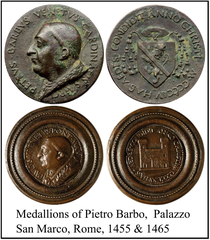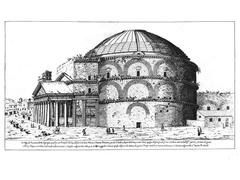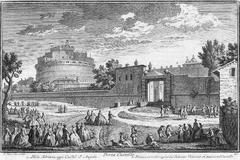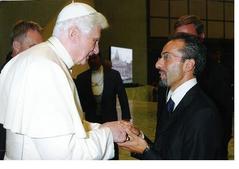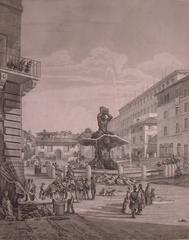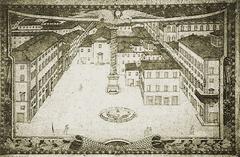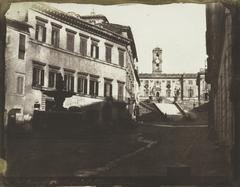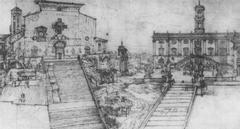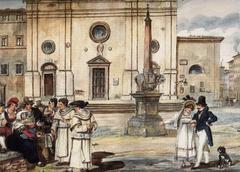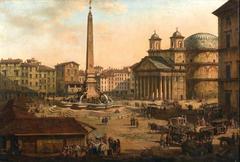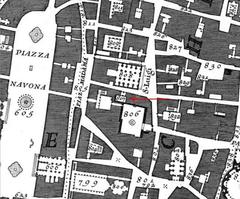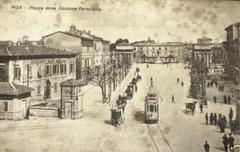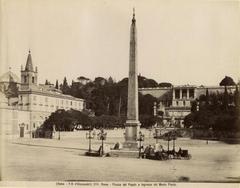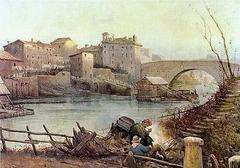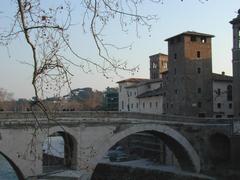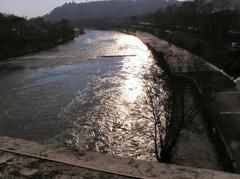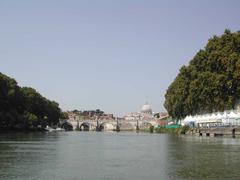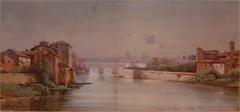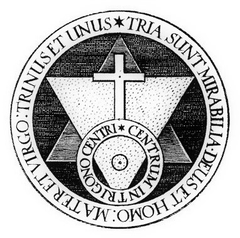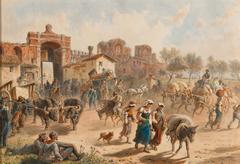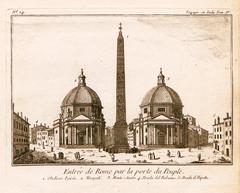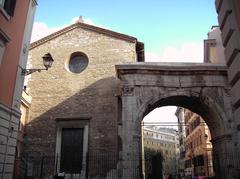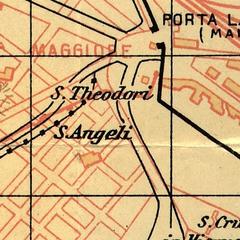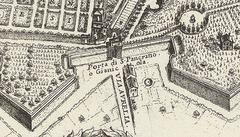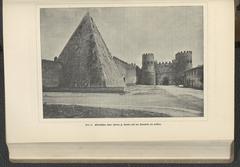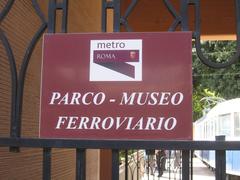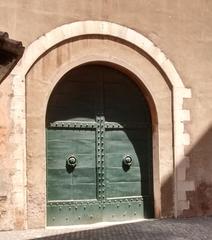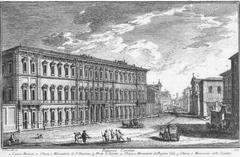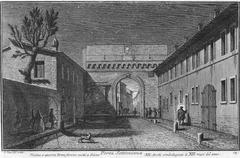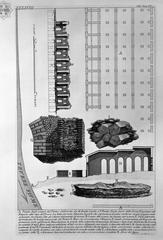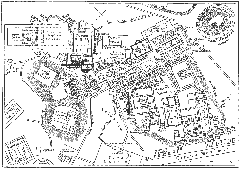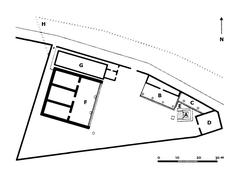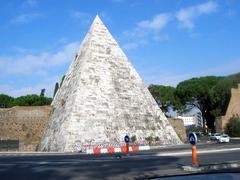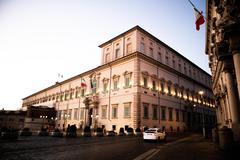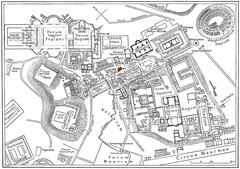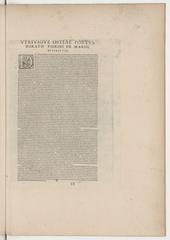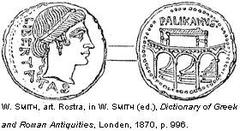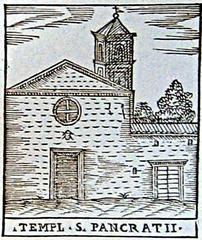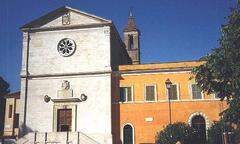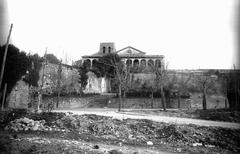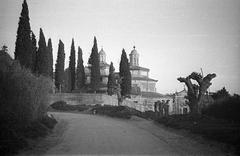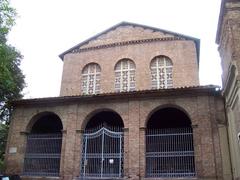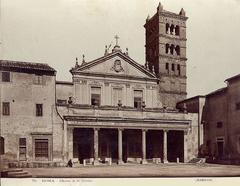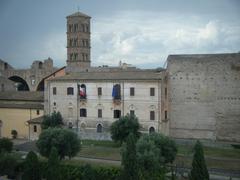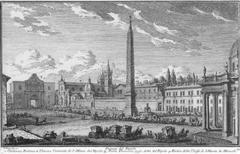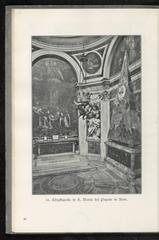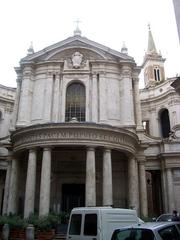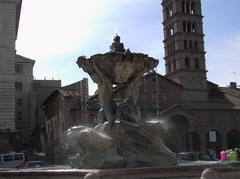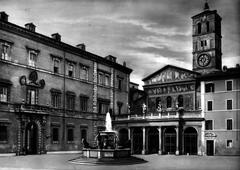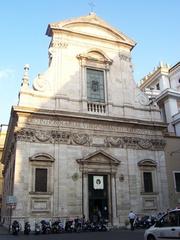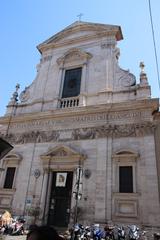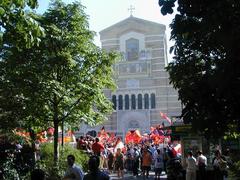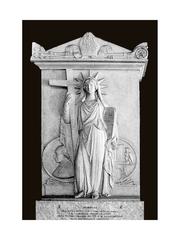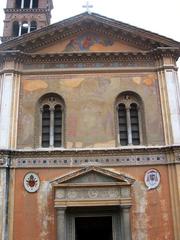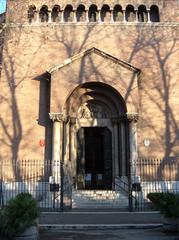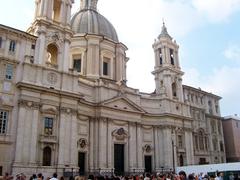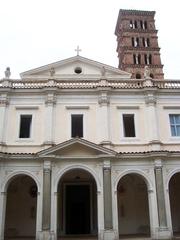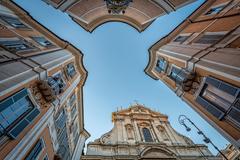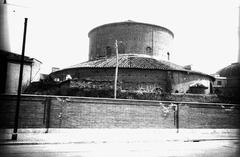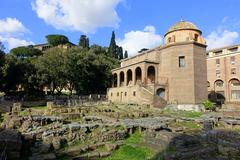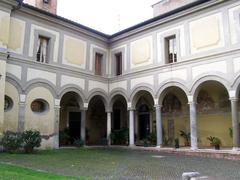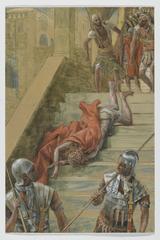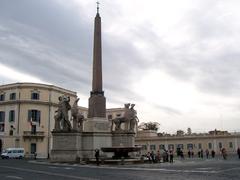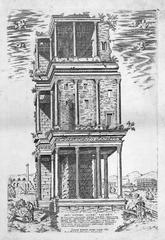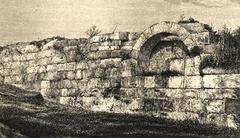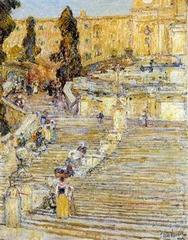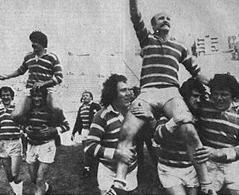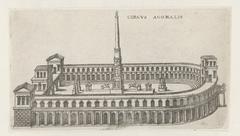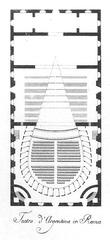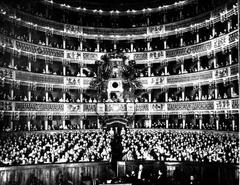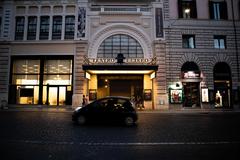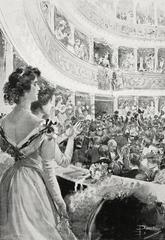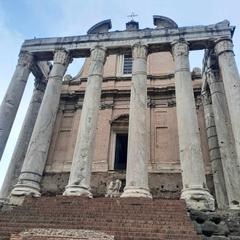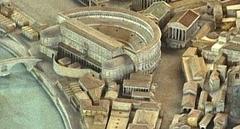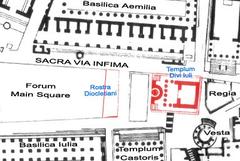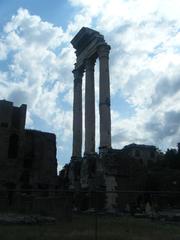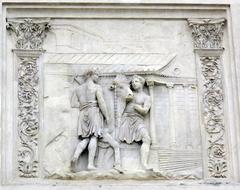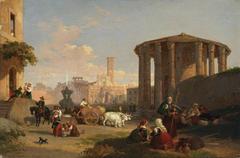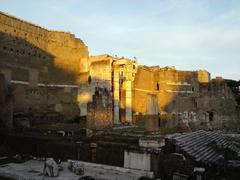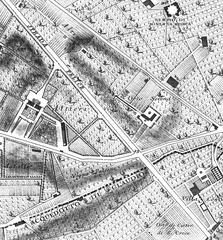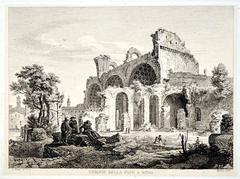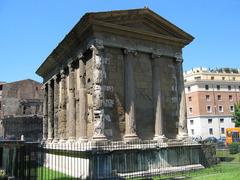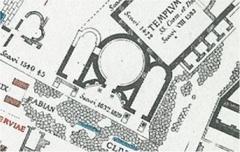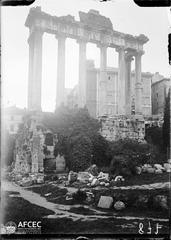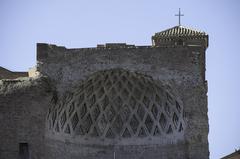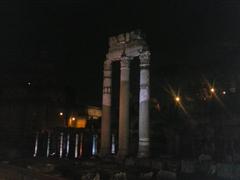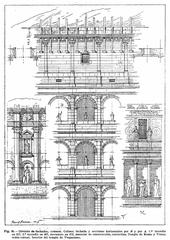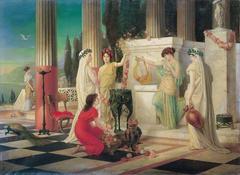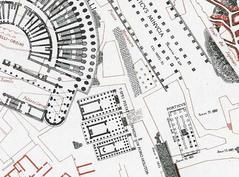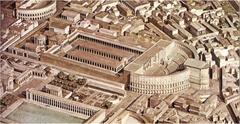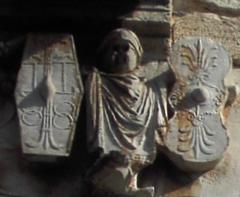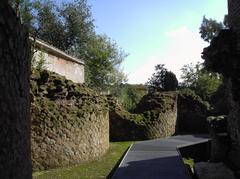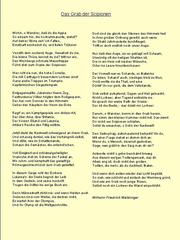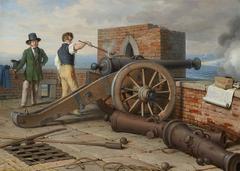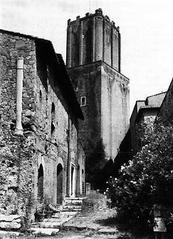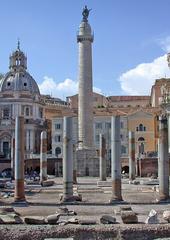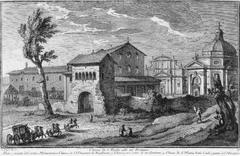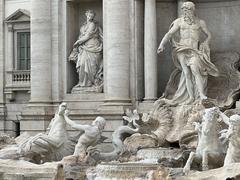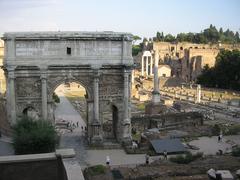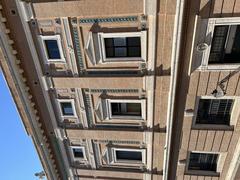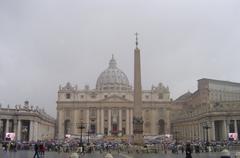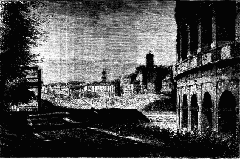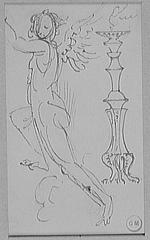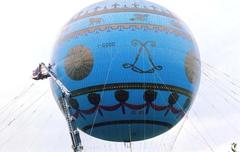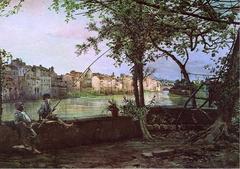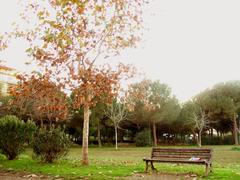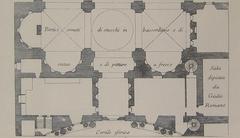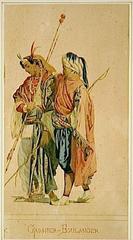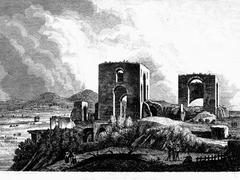Comprehensive Guide to Visiting La Casina delle Civette, Rome, Italy
Date: 24/07/2024
Introduction
Nestled within the lush confines of Villa Torlonia in Rome, La Casina delle Civette, or the House of Owls, stands as a captivating testament to the city’s rich cultural and architectural heritage. This unique site, often overlooked by the casual tourist, offers a fascinating blend of historical significance, architectural innovation, and artistic beauty. Originally designed in 1840 by Venetian architect Giuseppe Jappelli, the building has undergone several transformations, each adding layers of stylistic and symbolic depth. From its beginnings as the ‘Swiss Hut’ to its reimagining as a ‘medieval hamlet’ under Giovanni Torlonia Jr., La Casina delle Civette has evolved into a radiant tribute to Art Nouveau and Liberty style. Today, it serves as a museum dedicated to stained glass, offering visitors a glimpse into its storied past and artistic treasures (Rome Actually, Turismo Roma, Atlas Obscura). Whether you’re a history enthusiast, an art lover, or simply a curious traveler, this comprehensive guide will provide all the information you need to make the most of your visit, from historical insights and architectural highlights to practical tips on tickets, visiting hours, and nearby attractions.
Table of Contents
- Introduction
- Historical Background
- Museum and Current Use
- Visitor Information
- Travel Tips and Nearby Attractions
- FAQ
- Conclusion
Historical Background
Origins and Early Construction
The origins of La Casina delle Civette can be traced back to 1840. The initial structure was designed by Venetian architect and engineer Giuseppe Jappelli. Commissioned by Prince Alessandro Torlonia, the building was originally known as the “Swiss Hut” or “Capanna Svizzera.” This early version of the house was designed to resemble an alpine hut, featuring an exterior made of tuff ashlars and an interior painted in tempera to imitate rocks and wooden boards (Rome Actually).
Transformation into a Medieval Hamlet
In 1908, Giovanni Torlonia Jr., the nephew of Alessandro Torlonia, initiated a significant transformation of the Swiss Hut. He commissioned local architect Enrico Gennari to redesign the building, giving it the appearance of a “medieval hamlet.” This renovation included the addition of large windows, small towers, lodges, and porticoes. The overall decoration was enhanced with majolica ceramics and stained glass, making the house more elegant and sophisticated (Turismo Roma).
Art Nouveau and Liberty Style
The Casina delle Civette is a radiant tribute to Art Nouveau and Liberty style. The house features bright colors, dazzling mosaics, stylized birds, and numerous stained glass doors and windows. These elements contribute to the unique and artistic atmosphere of the house. The stained glass windows, in particular, are a distinctive feature, depicting various motifs such as birds, flowers, and plants, with owls being the most prominent (Rome Actually).
Decline and Restoration
The decline of the Casina delle Civette began in 1944 during the Anglo-American occupation, which lasted for over three years. The building suffered further damage from a fire in 1991, followed by acts of vandalism and theft. In 1978, the Municipality of Rome acquired the entire park of Villa Torlonia, including the Casina delle Civette. A painstaking and lengthy restoration process began in 1992 and continued until 1997, aiming to restore the house to its original splendor (Atlas Obscura).
Architectural and Decorative Features
The architectural and decorative features of the Casina delle Civette are what make it truly unique. The house is adorned with stained glass windows, mosaics, and colored ceramic tiles. The windows, installed between 1908 and 1930, are particularly noteworthy. One of the most striking windows is a large Liberty-style window made of three glasses, with the central one depicting a lake landscape with a white swan, and the side glasses decorated with flower patterns of iris and cattail (Rome Actually).
Historical Significance
The Casina delle Civette holds significant historical value as it was the residence of Giovanni Torlonia Jr. until his death in 1938. During the Fascist regime, Benito Mussolini rented and occupied the Casino Nobile, another building in Villa Torlonia, while the Casina delle Civette served as a hideout for Giovanni Torlonia Jr. The house’s secluded location behind a small hill made it an ideal escape from the public duties of the official residence (Rome Actually).
Museum and Current Use
Today, the fully restored Casina delle Civette functions as a museum dedicated to stained glass. The restoration work was based on literary sources and old documents, ensuring that the house was brought back to its original state. The museum offers visitors a chance to explore the beautifully restored interior, marvel at the stained glass windows, and appreciate the intricate details of the house’s design (Turismo Roma).
Visitor Information
Visitors to the Casina delle Civette should note that while entry to the surrounding park is free, tickets for the house must be purchased at the Villa Torlonia palace, which is closer to the main entrance. The house is open to the public from Tuesday to Sunday, 9:00 AM to 7:00 PM. It is closed on Mondays, May 1st, and December 25th. The last admission is one hour before closing time (Wanted in Rome). Ticket prices are €6 for adults and €5 for reduced tickets. Special events and guided tours are often available, providing a deeper understanding of the house’s history and architectural details. Photography is allowed, and the house offers several picturesque spots perfect for capturing its beauty.
Travel Tips and Nearby Attractions
To make the most of your visit, consider these travel tips. Wear comfortable shoes as you will be walking through the expansive Villa Torlonia park. Bring a camera to capture the stunning architectural details and stained glass windows. Nearby attractions include the Casino Nobile, the Museum of the Roman School, and the Technotown, all located within Villa Torlonia. Additionally, the vibrant neighborhood of San Lorenzo is just a short walk away, offering a variety of restaurants and shops.
FAQ
What are the visiting hours for La Casina delle Civette?
The house is open from Tuesday to Sunday, 9:00 AM to 7:00 PM. It is closed on Mondays, May 1st, and December 25th.
Where can I buy tickets for La Casina delle Civette?
Tickets can be purchased at the Villa Torlonia palace, located near the main entrance to the park.
How much do tickets cost?
Tickets are €6 for adults and €5 for reduced tickets.
Are there any guided tours available?
Yes, guided tours are often available and provide a deeper understanding of the house’s history and architectural details.
Can I take photos inside La Casina delle Civette?
Yes, photography is allowed, and there are several picturesque spots perfect for capturing the beauty of the house.
Conclusion
La Casina delle Civette is not merely a historical site; it is a journey through time, art, and culture. This hidden gem in Rome’s Villa Torlonia offers a unique experience that combines architectural splendor with artistic brilliance. From its early days as the ‘Swiss Hut’ to its transformation into a medieval hamlet and its current status as a museum dedicated to stained glass, the House of Owls has continually captivated those who venture to explore it. The detailed restoration efforts have preserved its intricate designs, allowing visitors to appreciate its beauty in its near-original state. Whether you’re drawn by its historical significance, its stunning stained glass windows, or its serene park setting, La Casina delle Civette promises a rewarding visit. As you wander through its halls and gardens, you’ll find yourself immersed in a world where art and history intertwine, offering a deeper understanding of Rome’s rich cultural tapestry (Romeing, Musei di Villa Torlonia, Comune di Roma). Don’t miss the chance to explore this enchanting site and discover its many stories and secrets.
References
- Rome Actually. (n.d.). Casina delle Civette Rome Villa Torlonia. https://www.romeactually.com/casina-delle-civette-rome-villa-torlonia/
- Turismo Roma. (n.d.). Casina delle Civette House Owls. https://www.turismoroma.it/en/places/casina-delle-civette-house-owls
- Atlas Obscura. (n.d.). Casina delle Civette. https://www.atlasobscura.com/places/casina-delle-civete
- Romeing. (n.d.). La Casina delle Civette. https://www.romeing.it/la-casina-delle-civette/
- Musei di Villa Torlonia. (n.d.). La Casina delle Civette. https://www.museivillatorlonia.it/en/mostre_ed_eventi/mostre/la_casina_delle_civette
- Comune di Roma. (n.d.). Scheda Servizi. https://www.comune.roma.it/web/it/scheda-servizi.page?contentId=INF15882
